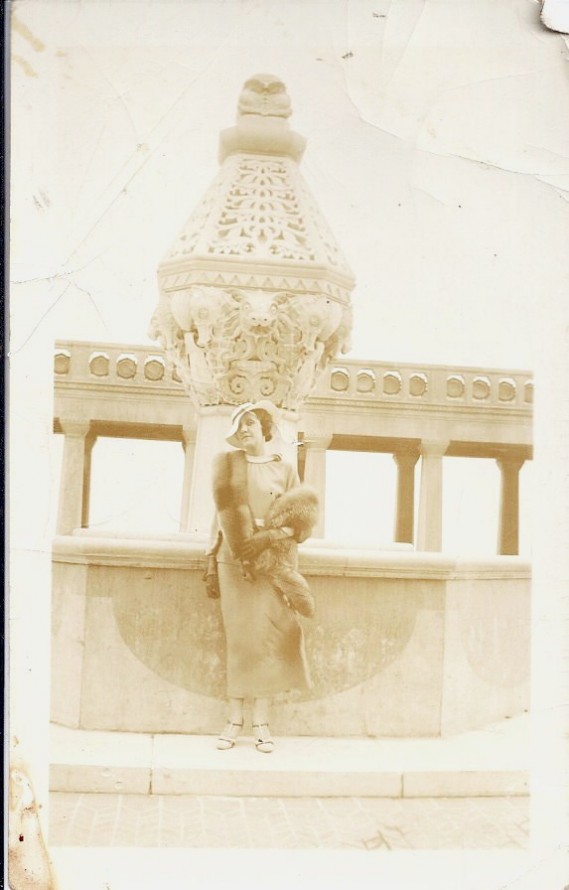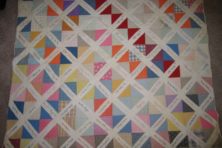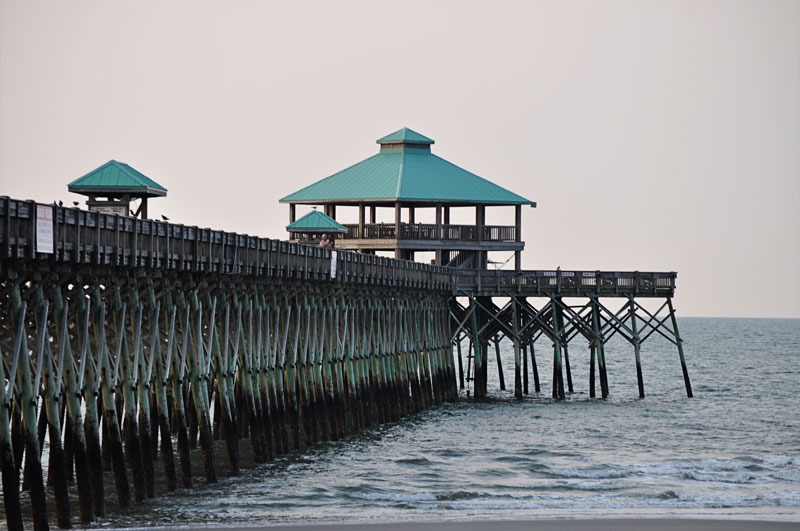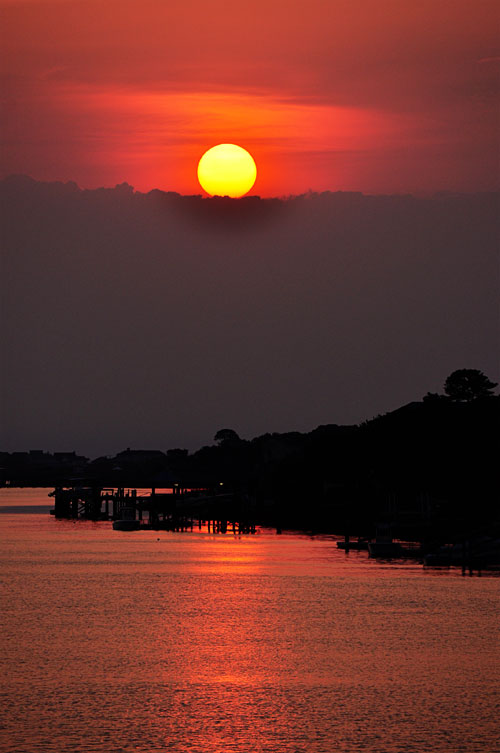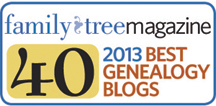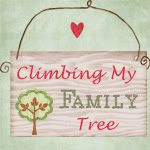Charlotta Eugenia Viktoria Klarstrom, (or Eugenia as she was called), was my great-grandmother.
She was the tenth (and last) child of Carl Magnus Klarstrom and Elisabeth Christina Bennberg. I have written 9 previous posts on each of her older siblings over the past few weeks. I am glad I took the time to do some more research on them, because it has given me greater insight into the entire family. Don’t forget the siblings!!!
Eugenia was born January 4, 1888 in the Lenhovda parish, Sweden. Her family had previously lived in Gavle and in nearby Alvkarelby. I am not quite sure what caused the family to move to the Lenhovda area, but they only lived there for about four years. You can see in the map below that it was quite a ways from the Gavle area.

Her father, Carl Magnus, was listed as a “Klamparen”, which is a supervisor in a sawmill, who sorts the lumber out. Maybe they moved because of his job.

I started to get a bit confused, because despite the fact that I found Eugenia’s birth record in the Lenhovda parish records, she listed her birth place as Nybro on her declaration of intention. I wasn’t sure which to believe. Nybro is in nearby Kalmar county and there don’t appear to be any parish records from that town until 1932. Could the records for Nybro have been included in Lenhovda in 1888? They are about 55 miles apart.

I finally made sense of it all when I realized that the “Skogstorp” listed in her birth record was in fact the place where she was born. Her family was living in the Skogstorp area of Lenhovda parish also:
 And Skogstorp appears to be between Lenhovda and Nybro (actually closer to Nybro!). Mystery solved. I love those little “aha” moments. I zoomed in as close as I could on Google and Skogstorp looks like it’s not much more than a couple of houses and a whole bunch of trees.
And Skogstorp appears to be between Lenhovda and Nybro (actually closer to Nybro!). Mystery solved. I love those little “aha” moments. I zoomed in as close as I could on Google and Skogstorp looks like it’s not much more than a couple of houses and a whole bunch of trees.
 The family moved to Alem in 1889 (one year after she was born). Alem is along the coast in Kalmar county (not far from Nybro).
The family moved to Alem in 1889 (one year after she was born). Alem is along the coast in Kalmar county (not far from Nybro).
Here is the family in the household register in Alem.

And then the family moved yet again on June 27, 1890 – back to Gavle. What is with all of the moving?? Why didn’t my family peacefully live in one village for a hundred years? 🙂 For this reason, I am forever grateful that Sweden has such spectacular parish records available. To be given the exact date that they left the parish is amazing to me.
I have yet to find the Klarstrom family in the household registers in Gavle. It’s proving to be much more difficult than finding them in the smaller parishes. Gavle was a large city and the records are not indexed, which means I have to page through them. I do know that they moved there in 1890 though, because it was recorded in the moving out records in Alem.
Eugenia’s father, Carl Magnus, died in Gavle on September 7, 1890 – only a little over a month after they moved to the city. She was only 2 years old at the time and would never know him. 🙁
 I posted a request on Genealogy Wise for someone to help me translate what the cause of death was. Someone kindly helped me out and told me that it says “submersio”. He drowned. I’m surprised and of course full of a lot of questions. Was it an accident? Was it suicide? Was he working? Did it happen in the river? The sea? The bathtub? I’m not sure that I’ll ever know the answer to these questions.
I posted a request on Genealogy Wise for someone to help me translate what the cause of death was. Someone kindly helped me out and told me that it says “submersio”. He drowned. I’m surprised and of course full of a lot of questions. Was it an accident? Was it suicide? Was he working? Did it happen in the river? The sea? The bathtub? I’m not sure that I’ll ever know the answer to these questions.
I do know that his death left my great-great grandmother alone and she didn’t remarry. Three of her ten children were already living in the U.S. I think that this paved the way for the younger ones heading over also, especially since they probably had to earn some money now that their father wasn’t working. Eugenia’s brothers Hjalmar, Robert, and Reinhold headed to the U.S to work in the 1890’s. Olga left in 1892 and then returned briefly in 1898, to bring Klara back with her also. Klara was the closest child in age to Eugenia.
As far as I know, this left my great-grandmother and her brothers Carl and Napoleon as the only children who were still in Sweden in 1900. As I’ve said, I haven’t found them in the household records yet, so I’m not entirely sure if Carl and Napoleon were actually there.
I found Eugenia and her mother on the moving out list in Gavle on June 9, 1904. They are listed as emigrating to North America.
 I found them on a passenger list from Goteborg to Boston in June of 1904. They were domestic servants.
I found them on a passenger list from Goteborg to Boston in June of 1904. They were domestic servants.
I also found them returning to Sweden in 1905 though, so it appears that they only stayed for one year. Why didn’t they go back?
Eugenia married Lars Julius Bergman on October 24, 1908 in Gavle.

Their first child, Martha Elizabeth Victoria, arrived a few months later – on January 3, 1909. Did they marry simply because she was pregnant?
Another daughter, Elvy Kristina Eugenia was born in 1913.
Lars then left for the United States in November of 1913. He immigrated through Quebec and moved on to Seattle, Washington. He settled in the Ballard neighborhood, which was a thriving Scandinavian community.
Eugenia and the two children arrived the next year. They traveled on the SS Helig Olav, arriving October 13, 1914 in New York. They were processed through Ellis Island – which I think is very cool. 🙂 I am assuming that they probably took a train across the country to Seattle to meet up with Lars.
A son, Walden Julius was born to them in Seattle in 1917. Here is a picture of the family which must have been taken in about 1918-1919. I love the bows on Martha and Elvy’s heads.
 And then my grandmother, Eleanore Sonia Bergman came in 1922. Here she is as a small child.
And then my grandmother, Eleanore Sonia Bergman came in 1922. Here she is as a small child.

Unfortunately, I don’t think that Lars and Eugenia’s marriage was a very happy one. They were still living together in the 1930 census, but I found an announcement of their divorce being granted in the Seattle Times in October of 1937 – after 29 years of marriage.
In 1935, Eugenia had put in her declaration of intention to become a citizen. I was so overjoyed when I found this document, because I was lucky that it included a picture!

Eugenia never remarried and she died on April 15, 1960 in Seattle, WA.

If you’ve made it this far, then thank you for sticking with me. I find that it often helps me to write out my research so that I can find the holes in it. From looking back at what I have on Eugenia, there are a few things that I know I want to look into further:
- Try to find the family in the Gavle household registers. (This will take a lot of patience, chocolate and BBC movies as I page through it.)
- Order the divorce records of Lars and Eugenia (although I feel a little bit like it’s none of my business. I think one generation further back and I wouldn’t have any second thoughts about it. What do you think? None of their children are still living, but they have many grandchildren that remember them.Am I being too nosy?)
- Order her death certificate, just to have it.I’d like to know the cause of her death.
- Visit her gravestone and take a picture of it.
- Find out what the Order of Vasa was, which she was a member of.
Any other suggestions? Oh, and does anyone know how to get the little dots above the letters? Klarstrom should have dots (I really want to call them umlauts but that’s German) over the o. And many of the place names have special Swedish letters also. I don’t know how to type those (other than to copy and paste them and I was WAY too lazy to do that throughout this entire post.) 🙂
